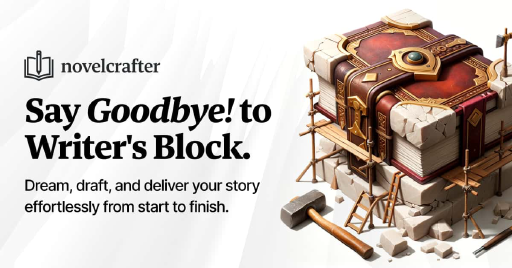Crafting Compelling Historical Fiction
Introduction to Writing Historical Fiction
Writing historical fiction gives you the chance to whisk readers away to different times, letting them feel the pulse of cultures and witness events that shaped society. As you dive into this experience, blending captivating tales with the weight of history is crucial. To nail it, weave fascinating plots with real events, ensuring your audience feels both entertained and enlightened.
Here’s what to keep in mind when beginning your historical fiction quest:
| Aspect | Details You’ll Want to Note |
|---|---|
| Keeping It Real | Toss in actual events for believability. |
| Breathing Life Into Characters | Design characters who truly fit their era. |
| Getting Hearts Involved | Move readers by tying characters’ stories to real events. |
To boost your storytelling game, check out our tips on how to improve writing skills and tips for writing a novel.
Importance of Research in Historical Fiction Writing
Think of research as your secret weapon. It’s what builds the skeleton of your story and adds depth to your characters’ lives. Knowing the era inside and out is a must; it shapes everything from how people chat to the gadgets they use and the government they curse.
Some go-to research methods include:
| Research Hack | How it Helps |
|---|---|
| Digging Up Old Stuff | Dive into letters, diaries, and old photos for a peek into the past. |
| Learning from the Pros | Grab history books and articles for deep dives into events and societal quirks. |
| Going Digital | Sift through online archives and libraries brimming with historical gold. |
Take neat notes as you research, marking what’s solid info and what’s a bit of fictional fun. For help on shaping your narrative, pop over to our pieces on how to develop characters in a story and how to plot a novel.
With research as your sidekick, not only does your storytelling level up, but your respect for the past shines through. This makes your writing a gem that’s both authentic and impactful.
Developing Authentic Characters
Writing historical fiction? Time for your characters to step out and march into the hearts of your readers. Get ’em real, get ’em engaging—all while sticking to historical truth. You’re about to shape personalities that click with the past and the readers.
Creating Believable Characters
When building characters, think of this like baking a cake: you gotta have the right ingredients for a delightful outcome.
-
Background: Enrich their worlds with stories from their past. That old rivalry with their cousin? The secret affection for the town carpenter? Fill their lives with history, just like you’re setting up their Facebook timeline.
-
Flaws: Perfect people are just plain boring. Throw in a dash of stubbornness or fear of heights to keep them real.
-
Goals and Desires: What makes them tick? Figure out what they’re after—even if it’s just the world’s best apple pie recipe.
-
Growth Journey: Let change be their middle name. Let them trip, fall, and rise again from each little crisis or big historical mishap.
Kickstart each character with a basic sketch using these ingredients. Layer on the drama of historical events impacting their lives. For more, pop over to our article on how to develop characters in a story.
 What Poetry Feels Like
What Poetry Feels LikeIncorporating Historical Context into Character Development
Characters rooted in history? Now that’s the ticket. Let’s sprinkle some authenticity on their tales.
-
Historical Events: Drop your characters into real events that shape their lives like stormy weather or sunny days.
-
Cultural Norms: How did society see things back then, huh? Let these norms stick to your characters like gum under a desk in high school.
-
Language and Speech Patterns: Give ‘em the voice of the time—whether they greet with a cheeky “Hear ye!” or scold in upper-crusty English.
-
Occupations and Roles: Make sure their job fits in the era and impacts their daily grind, be it blacksmith or ballroom belle.
Turn the pages of history to get those insights. Dig through old letters or diaries for a peek into past lives. Looking for some more hands-on advice? Don’t miss our tips for writing historical fiction.
Mix historical paths with your characters’ personal quests to craft stories that tug at heartstrings and chain minds to your plot. With the right historical sauce, these journeys won’t just tell, but enchant.
Setting the Scene
Nailing the vibe in historical fiction means really letting the reader slip back in time. It’s like you got a time machine, and you’re the driver. So, how do you get folks feeling like they’ve just face planted into another century? Let’s break it down.
Establishing the Time and Place
First thing first, pick your era and place wisely. Think of it like setting the scene in a movie – it’s gotta be spot on. Dig into what was happening back in your chosen time: the dramas, the rules, the tech, and even the lay of the land. Here’s what you gotta check out:
| Thing to Consider | What It Means |
|---|---|
| Big Historical Stuff | What’s the buzz? Wars, peace treaties, or royal shenanigans? |
| Cultural Vibes | The do’s and don’ts of daily life. What’s trendy? |
| Gadgets and Gizmos | What were the fancy new inventions folks were gushing about? |
| Landscape and Layout | How did the area look and how’d it shape people’s lives? |
Hit the books, watch some documentaries, or scroll credible online resources so the scenes you write feel real. The more you know, the more your words will make it seem like you’ve been there. If you’re also wondering how to flesh out characters in all this historical hubbub, peek at how to develop characters in a story.
Creating Atmosphere and Setting Details
Now, once you’ve got your time and place figured out, it’s time to build that world up. You gotta paint it with words, make it so rich your readers can almost touch it. Here’s how:
- See, Hear, Smell, Feel, Taste: Let readers ‘see’ the cobblestone streets, ‘hear’ the clinking of mugs in a tavern, ‘smell’ the smoke in the air, ‘feel’ the leather of a saddle, and ‘taste’ the rustic bread.
- Old-School Stuff: Pepper in things like old outfits, gadgets, or household odds and ends that scream of the times gone by.
- Chit-Chat: Make sure your characters ain’t talking like they’re from the 21st century. Fancy a look into talking like your story demands? Check this out: how to write compelling dialogue.
Here’s a handy checklist to whip up the perfect atmosphere:
| Atmosphere Goodies | What’s That? |
|---|---|
| What You See | Colors, shapes, and the knick-knacks lying around. |
| What You Hear | Background tunes or the hustle-bustle ambiance. |
| What You Smell | Scents that are unique to your time and place. |
| What You Feel | Textures characters run into, like rough burlap or smooth glass. |
So, give those tiny details the love and attention they deserve, and you’ll have people losing themselves in your world. After some extra pointers on immersive scene-setting? Check out tips for writing descriptive scenes.
Plotting a Historical Narrative
Creating a gripping historical narrative is a mix of historical events with imaginative storytelling. Here’s a guide to help you master this art without losing your audience along the way.
Tying Historical Events into the Plot
Incorporating real historical events makes your story richer and more believable.
- Pick the Right Moments: Look out for key events that could shape your characters’ lives. Use timelines to pick moments that fit your story well.
| Historical Event | Year | Influence on Storyline |
|---|---|---|
| The French Revolution | 1789 | Social unrest steering character actions |
| World War II | 1939 | Drives character choices and hurdles |
| Civil Rights Movement | 1960s | Explores justice and equality |
-
Character Reactions: Think about how your characters would realistically react to these situations. Are they swept up in the action, or are they on the sidelines? Detailed reactions make your characters more relatable.
-
Keep it Real: Stick to the facts when portraying events. Nobody likes a story where facts are twisted too much.
For tips on character development, check out how to develop characters in a story.
Mixing Fact with Fiction
Creating historical fiction means finding that sweet spot between reality and imagination. Here’s how:
-
Use Creative Freedom: While honoring history, don’t hold back on creativity. You can make up characters and dialog, but root them in real time periods.
-
Do Your Homework: Dive deep into research. Understanding an era’s subtleties can set your story apart. Blend firsthand accounts, like letters, with expert analyses to breathe life into the setting.
-
Fictional Flourishes: Add fictional touches to highlight themes or answer “what if” questions. This invites readers to imagine along with you.
| Element Type | Purpose |
|---|---|
| Historical Facts | Events, dates, real figures |
| Fictional Characters | Personalities, ancestral stories |
| Imagined Dialogues | Conversations that fit the time |
Ensure your fictional additions fit snugly into your story’s flow.
To further hone your plotting skills, have a look at how to plot a novel for added insights on blending history with fiction.
Dialogue and Language
Nailing dialogue and language in historical fiction is a game-changer. It makes your characters pop and pulls readers right into the past.
Keeping it Real with the Lingo
Got a historical yarn to spin? Then you’ve gotta talk the talk of the times. Using the right words from back in the day makes your tale feel real. It ain’t just about the vocab, though. Expressions and idioms count, too!
Consider whipping up a quick reference table of typical terms from different eras. It’s a handy guide when you’re in the thick of it.
| Era | Common Lingo | How It Rolls in a Sentence |
|---|---|---|
| Victorian Era | “muff” | “She clutched her muff while wandering the park.” |
| Roaring Twenties | “flapper” | “She cut a mean rug like a flapper at the speakeasy.” |
| 1960s | “groovy” | “That outfit is just groovy, man!” |
Using these old-school terms correctly pulls your readers deeper into your story’s world. Get cozy with the era’s slang and sayings to make your dialogue ring true.
Nailing that Genuine Dialogue
Your dialogue should echo who your characters are, all while fitting perfectly into the historical backdrop. Here’s how to make folks sit up and take notice:
-
Dive into Old Books: Check out novels, letters, or any writings from your chosen era. They’ll help you capture how folks spoke back then, which is gold for your characters’ chat.
-
Unique Voices: Make sure no two characters sound alike. Think about their roots, smarts, and social standing—these shape their way of talking.
-
Bounce Modern Slang: Keep today’s talk out of yesterday’s narrative. Swap in language true to the time period.
-
Show, Don’t Tell: Instead of saying someone’s mad, let their words and how they say them paint the picture. Makes for much richer interaction.
Want more tips? Peek at our write-up on how to write banging dialogue.
When you zoom in on using the right language and build authentic chatter, you lift your whole story. Following these tips gives you robust characters and a tale that sticks with folks.
Editing and Revising
Spiffing up your historical fiction is all about making your story shine and keeping your readers spellbound. It’s time to dig into the nitty-gritty, ensuring everything lines up with the history you’re weaving into your tale.
Editing for Historical Accuracy
When you’re telling a story from days gone by, getting the facts straight ain’t just important—it’s a must. Delve into the details to ensure what you’ve put down jives with the period you’re bringing to life. Here’s what you should keep an eye on:
| Aspect | Tips |
|---|---|
| Historical Events | Double-check the big events you’re writing about. You want your timelines and happenings to be on the money, so refer to trusty sources to check your dates. |
| Cultural Context | See that your cultural bits—like traditions and ways of thinking—are spot-on for the time and place. |
| Language Use | Mind the lingo. Make sure you’re using words and phrases that fit the era. No modern talk sneaking in. Maybe leaf through some old books to get the vibe right. |
| Costumes and Daily Life | Look into what folks wore, ate, and did day-to-day back then, so your characters aren’t putting on airs. |
Dig into history books or poke around in archives to double-check your facts. If some parts have your gears grinding, maybe chat with a historian or someone who knows their historical onions.
Incorporating Feedback for Improvement
Getting feedback is like gold dust for your writing. Constructive criticism helps you see things from a fresh angle and can tighten your storyline. Here’s how to soak up feedback effectively:
- Choose Your Readers Smartly: Pick beta readers who are into historical fiction and get what you’re trying to achieve. Their feedback can be solid gold.
- Keep an Open Ear: Listen with an open mind. Even the feedback that feels a bit harsh might be a blessing in disguise.
- Spot the Patterns: See if there are any repeat offenders in the feedback. If a few folks notice the same hiccup, it’s time to take a closer look.
- Take It Step by Step: Tackle one piece of advice at a time. Sort out plot hiccups first, then tackle grammar, and so forth.
Here’s a quick chart to help you track what’s been said and what needs fixing:
| Feedback Source | Comments Received | Actions Taken |
|---|---|---|
| Beta Reader 1 | Backstory needs beefing up. | Pump up the main character’s history and aims. |
| Editor | A few historical bits are off. | Dive back into the research and fix it. |
| Writing Group | Talk sounds too modern. | Tweak the dialogue to suit the times. |
Always keep in mind how feedback gels with what you’re going for in your story. Resources like how to improve writing skills are handy to boost your writing chops. The aim? To wrap your readers in a rich, true-to-the-times tale.

 Grab my poetry book, 'we're all just wanderers in the end' Here
Grab my poetry book, 'we're all just wanderers in the end' Here AD: Your Book Finally Written...
AD: Your Book Finally Written...